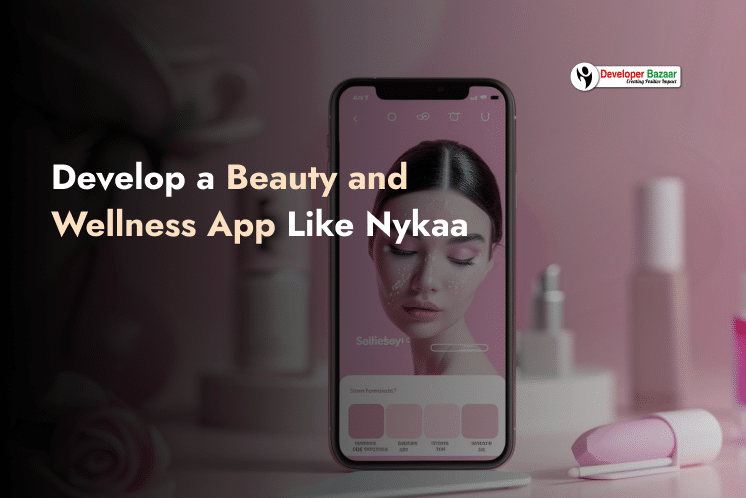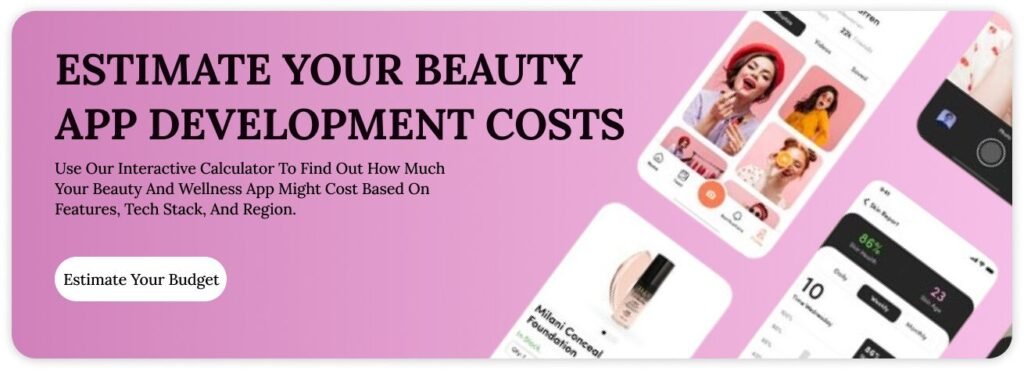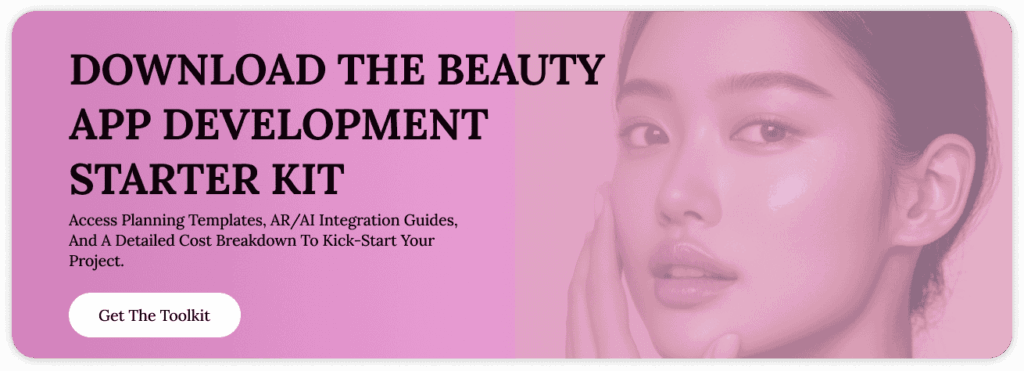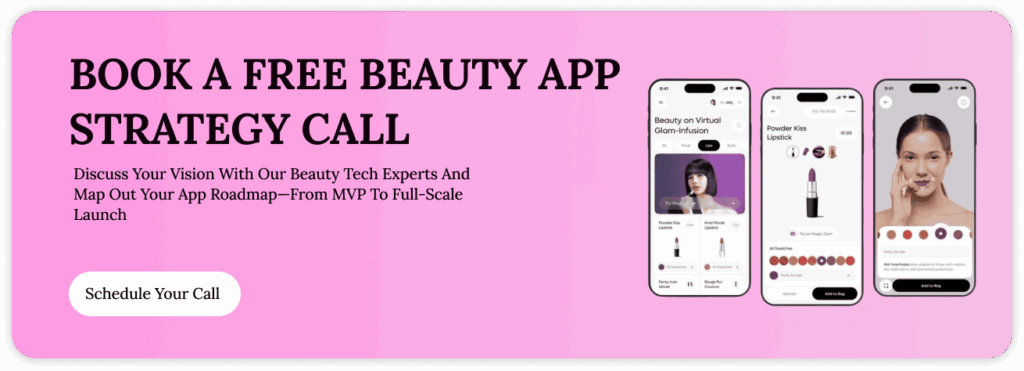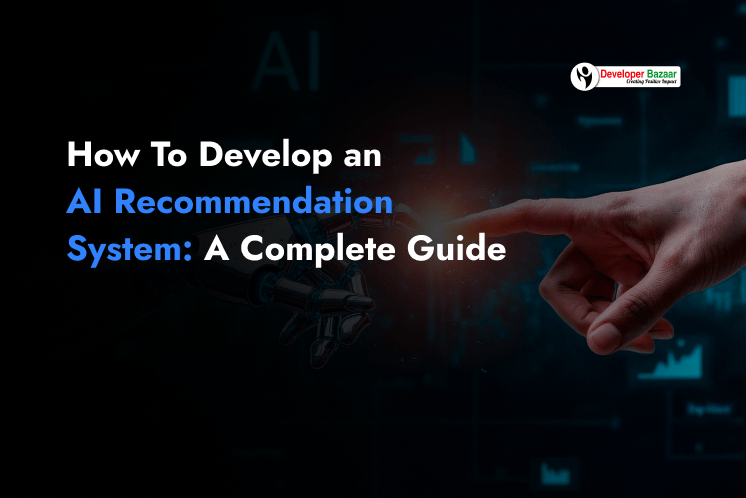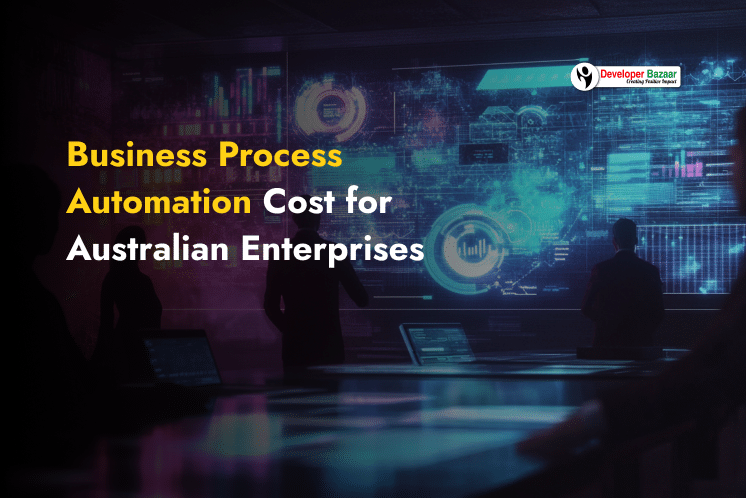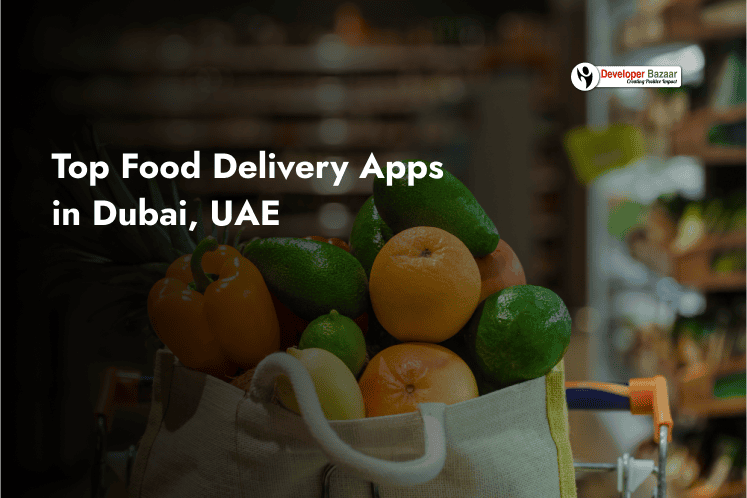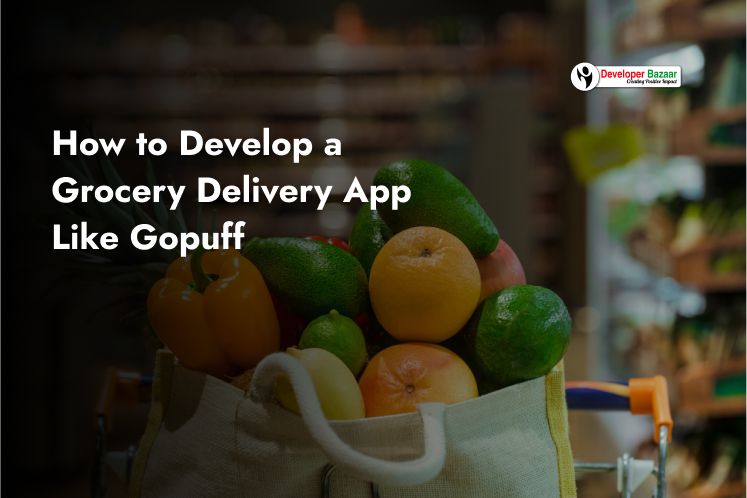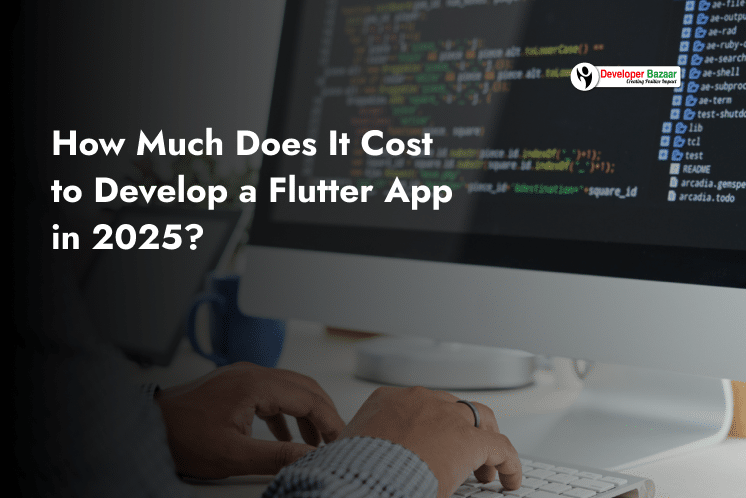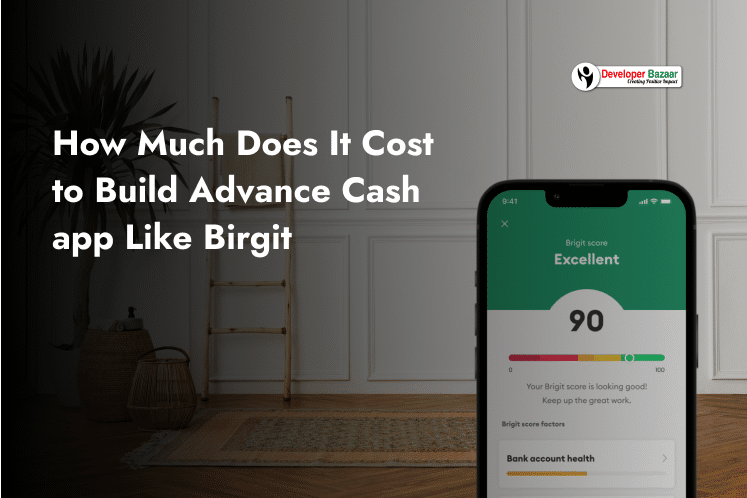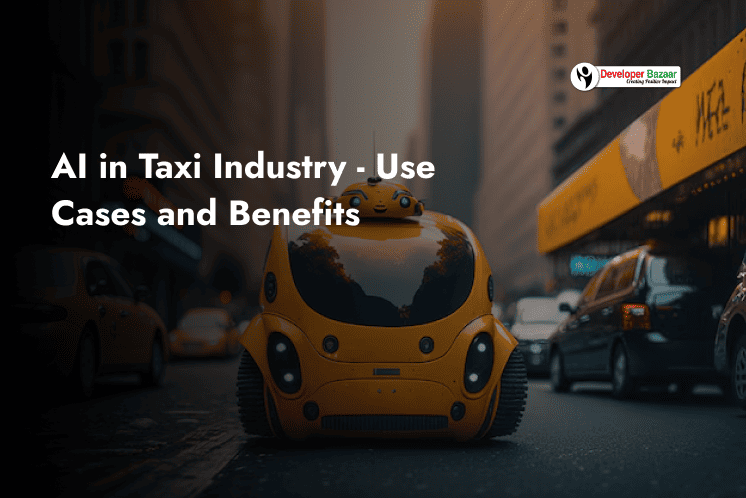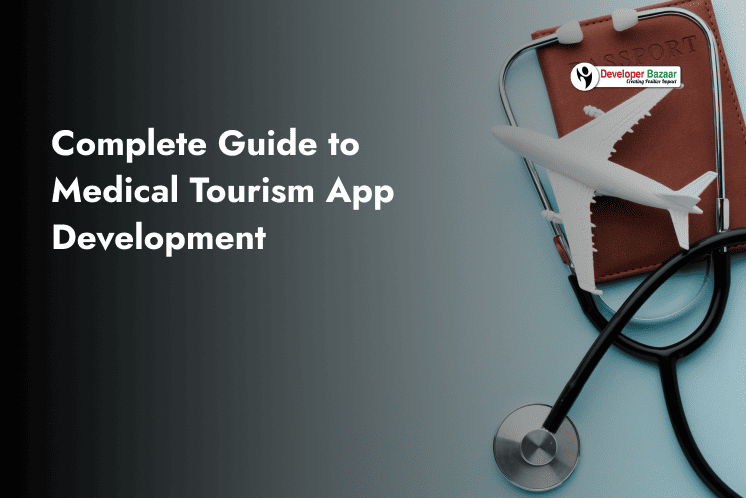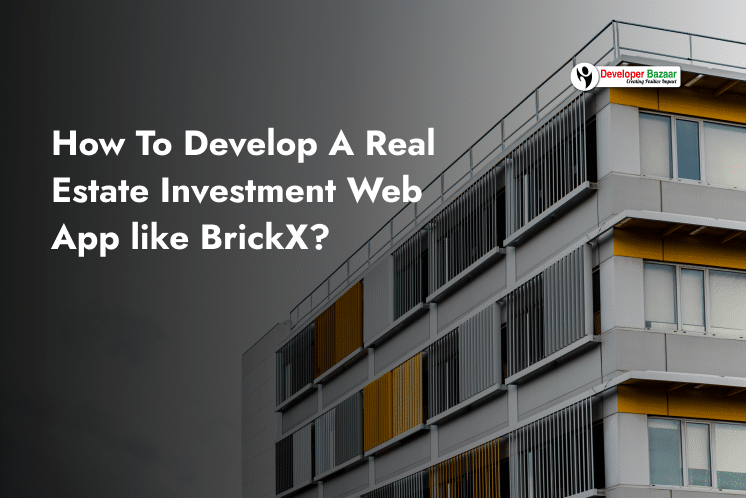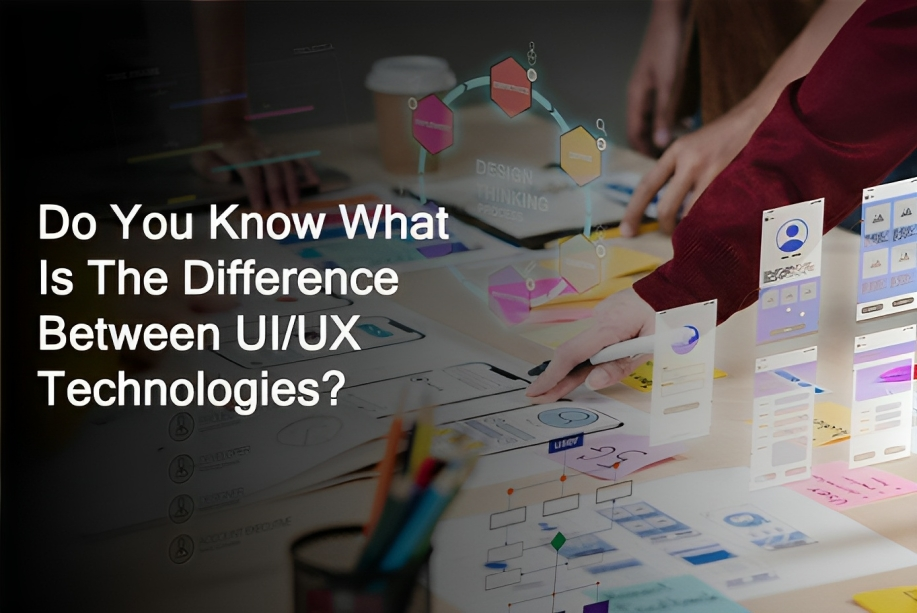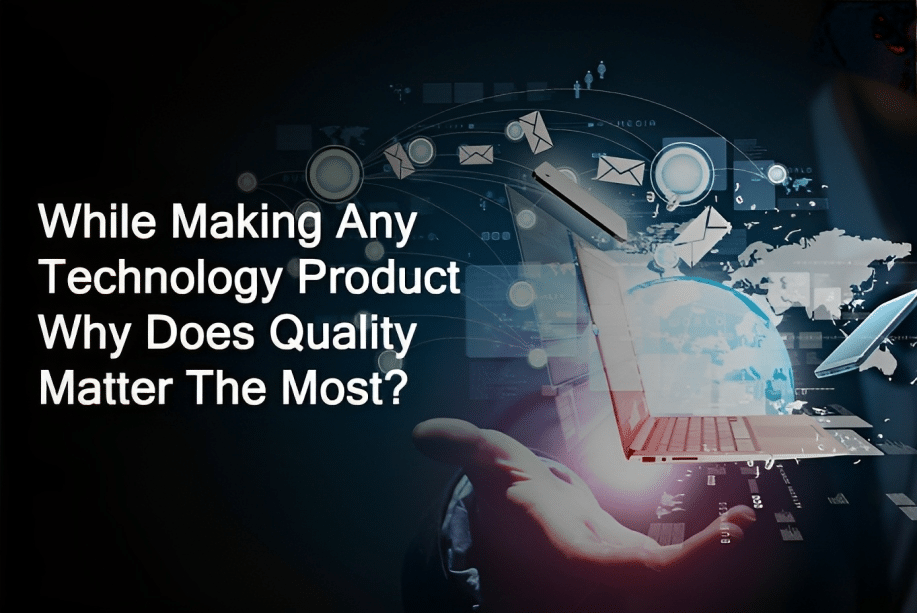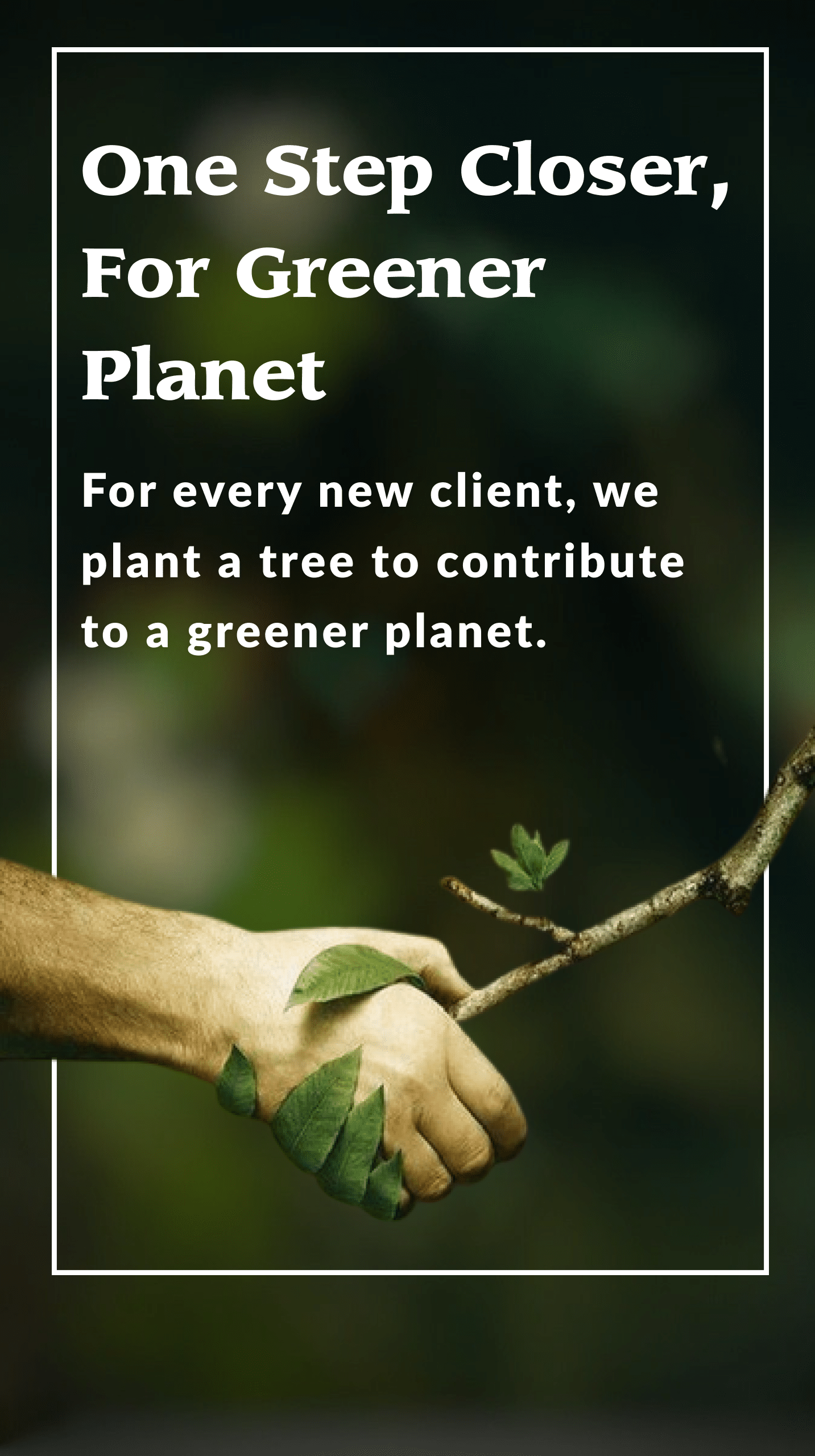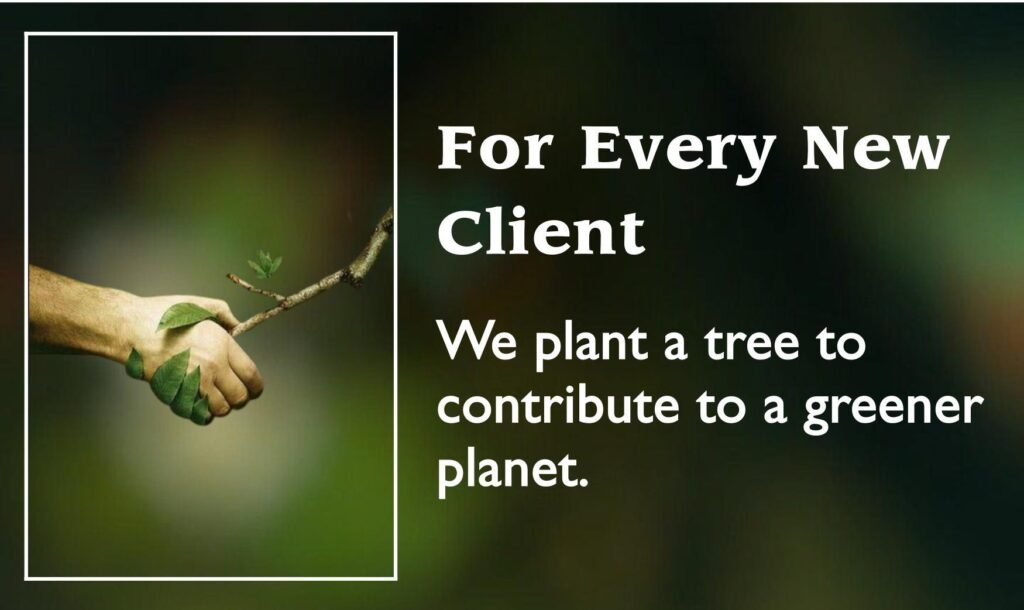Table of Contents
ToggleThe beauty and personal care market is experiencing unprecedented digital transformation. According to Fortune Business Insights, the global beauty and personal care market will surpass $631 billion by 2032, driven by a robust 6.69% CAGR. Mobile apps like Nykaa, Sephora, and Purplle now generate over 40% of revenue through personalized shopping experiences, AR try-ons, and influencer-driven content.
This comprehensive Nykaa App Development Guide covers everything you need to know about beauty store app development cost, essential features, and the complete development process to build a successful beauty commerce platform.
Understanding Nykaa's Success Story
Nykaa stands as India’s largest beauty and wellness marketplace, masterfully combining commerce, content, and community into a single platform. Founded in 2012, the company has revolutionized how consumers discover, evaluate, and purchase beauty products across India and beyond.
What Makes Nykaa Special?
Nykaa’s success stems from its extensive product catalog spanning over 2,000 brands, from affordable drugstore options to luxury international labels. The platform’s clean, user-friendly interface makes product discovery effortless, while AI-powered recommendations and AR try-on features enhance the shopping experience significantly.
Key Success Factors
The platform excels through influencer-driven tutorials and social commerce modules that build trust and drive engagement. Users can watch makeup tutorials, read expert reviews, and see real customer photos before purchasing. Nykaa’s integrated delivery system, loyalty programs, and subscription services create a comprehensive ecosystem that keeps customers returning.
Beauty and Wellness App Development Cost Breakdown
Understanding the cost to develop a beauty app like Nykaa is crucial for planning your project budget. The investment varies significantly based on feature complexity, design requirements, and development approach.
Cost by Development Complexity
| Complexity | Development Time | Estimated Cost |
|---|---|---|
| Basic MVP | 3–5 months | $20,000–$40,000 |
| Standard | 5–8 months | $40,000–$80,000 |
| Advanced | 8–12+ months | $80,000–$120,000+ |
Detailed Cost Breakdown by Development Stage
| Stage | Estimated Cost | Explanation |
|---|---|---|
| Planning & Research | $5,000–$10,000 | Market research, competitor analysis, project roadmap |
| UI/UX Design | $8,000–$18,000 | Visual design, AR try-on interfaces, user flow optimization |
| Frontend Development | $12,000–$35,000 | Product catalog, search functionality, cart and checkout flows |
| Backend Development | $15,000–$40,000 | APIs, databases, user management, inventory systems |
| AR Integration | $5,000–$20,000 | Virtual try-on modules, 3D product visualization |
| Testing & QA | $5,000–$12,000 | Functional testing, security testing, UX optimization |
| Deployment | $3,000–$8,000 | App Store and Play Store setup, initial launch |
| Maintenance | $2,000–$5,000/month | Ongoing updates, bug fixes, feature enhancements |
Additional Considerations
AR SDK licensing can cost $5,000–$20,000 annually, while cloud hosting typically runs $1,000–$3,000 monthly. Payment gateway integration and logistics partnerships also add to ongoing operational costs.
Key Factors Affecting Beauty App Development Cost
Understanding these cost drivers helps you make informed decisions about feature prioritization and development approaches when planning your beauty and wellness app development cost.
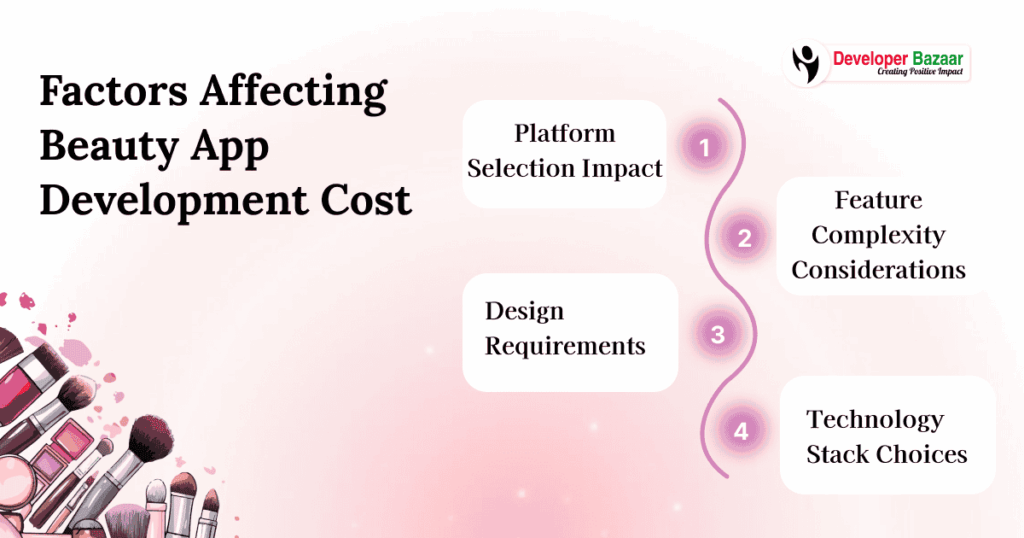
Platform Selection Impact
Choosing the right platform has a significant effect on your development timeline and budget. Cross-platform frameworks like Flutter or React Native can cut costs by around 30% compared to building separate native apps. However, if your app requires highly specialized features or performance optimization, native development becomes necessary, increasing both development time and expenses. A hybrid approach—combining native modules with cross-platform components—can help balance performance requirements and budget constraints effectively.
Feature Complexity Considerations
The complexity of your app’s features directly influences cost and development scope. Basic e-commerce capabilities such as standard product catalogs, shopping carts, and checkout flows are relatively straightforward to build. In contrast, advanced elements like augmented reality virtual try-ons require specialized SDKs and significantly more development resources. Incorporating AI-powered recommendations involves machine learning infrastructure for personalized suggestions, while social commerce features—such as user-generated content, influencer integration, and community engagement tools—add additional layers of complexity.
Design Requirements
Designing an engaging, professional app often demands a substantial investment. Custom UI/UX design, especially when integrating sophisticated animations and AR interfaces, can increase your budget by 20–30%. Brand-specific visual identities and tailored user experiences help differentiate your product in a crowded market but require careful planning and execution. Finally, ensuring responsive design across all devices and screen sizes is essential to deliver a seamless user experience and maximize retention.
Technology Stack Choices
Your technology stack determines both development efficiency and long-term scalability. For AR functionality, providers like Banuba, ModiFace, or Snap AR SDK each come with different licensing costs and technical considerations. Integrating AI or machine learning features typically relies on solutions like TensorFlow, AWS ML, or Google Cloud AI services. On the infrastructure side, secure and scalable cloud hosting from AWS, Google Cloud, or Azure will be essential for managing data storage, user authentication, and ongoing app performance.
Essential Features of a Beauty E-commerce App
Success in the beauty app market requires carefully selected features of a beauty e-commerce app that enhance user experience and drive business growth.
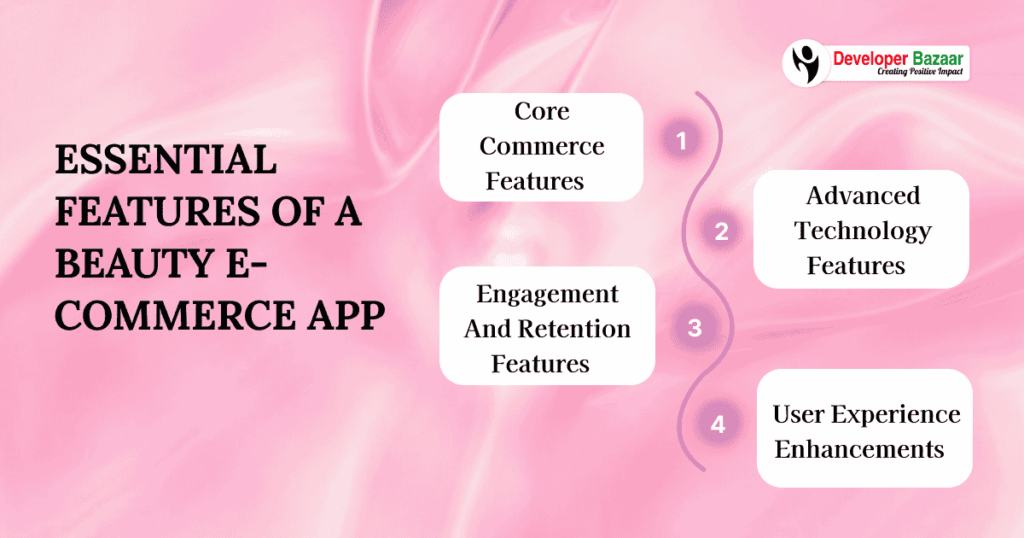
Core Commerce Features
At the foundation of any successful beauty e-commerce app are core commerce capabilities that make shopping smooth and intuitive. A robust product catalog lets you showcase comprehensive inventories with detailed descriptions, high-quality images, and specifications. Advanced search and filtering tools allow users to quickly find products by skin type, brand, price range, or category. A streamlined shopping cart and checkout experience with multiple payment options helps reduce abandonment rates, while real-time order tracking, accessible order history, and integrated customer support build trust and encourage repeat purchases.
Advanced Technology Features
Modern beauty apps stand out by incorporating advanced technology that bridges the gap between digital and physical experiences. AR virtual try-on tools let customers test makeup and skincare products in real time, reducing returns and increasing confidence in purchases. AI-powered recommendations suggest personalized products based on individual preferences, skin type, and shopping history. Skin analysis features use AI assessments to deliver custom regimens, while color-matching technology ensures users find the perfect foundation or cosmetic shade with accuracy.
Engagement and Retention Features
Driving loyalty and long-term engagement requires features that keep customers coming back. In-app expert consultations enable personalized advice from beauty professionals through video calls. Social commerce integrations, such as user-generated content, ratings, and influencer partnerships, foster community and authenticity. Loyalty programs offer points, cashback rewards, and exclusive benefits to incentivize repeat purchases. Subscription services, including curated monthly boxes and auto-replenishment options, create predictable revenue streams and deepen brand relationships.
User Experience Enhancements
A seamless user experience is critical for customer satisfaction and retention. Personalized profiles allow users to save preferences, purchase history, and skin details for a tailored experience every time they log in. Multilingual support ensures accessibility for diverse audiences across global markets. Smart push notifications keep customers engaged with timely updates on restocks, sales, and recommendations. Finally, offline capabilities let users browse products and manage wishlists even without an internet connection, maintaining engagement wherever they are.
Steps to Develop a Beauty Commerce App Like Nykaa
These comprehensive steps to develop a beauty commerce app guide provide a roadmap for building a successful platform like Nykaa.
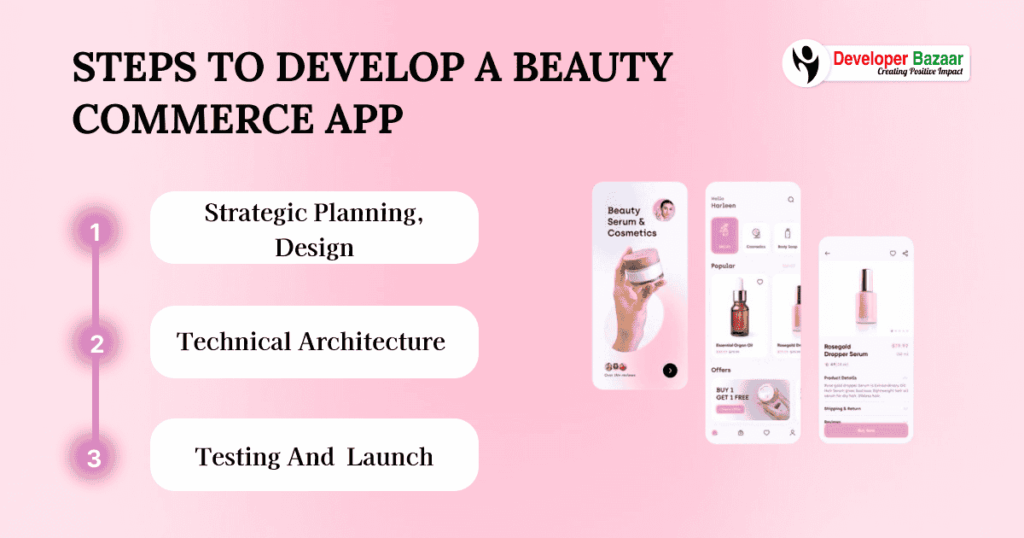
Phase 1: Strategic Planning, Design, and User Experience
The process begins with strategic planning and research, typically taking 3–4 weeks to define your target market, analyze competitors, and pinpoint unique value propositions that differentiate your app. During this phase, you’ll also build detailed project specifications and form partnerships with beauty brands and suppliers.
Next, you’ll transition into design and user experience over 4–6 weeks. This includes developing user personas, mapping customer journeys, creating wireframes and interactive prototypes, and designing a mobile-first interface. Special attention goes into AR try-on interface design to ensure a smooth, intuitive experience. Multiple rounds of user testing and iteration refine the design to meet real-world expectations.
Phase 2: Technical Architecture, Core Development, and Feature Integration
Once your design is validated, you’ll set up the technical architecture in 2–3 weeks by selecting the technology stack, configuring development environments, designing a scalable backend, and establishing robust security protocols. Core development, typically spanning 8–12 weeks, covers everything from product catalog and inventory management to user accounts, shopping carts, checkout flows, payment gateways, and order tracking systems.
This phase lays the groundwork for your commerce engine. Afterward, advanced feature integration takes 6–8 weeks to implement AR virtual try-ons with SDKs, build AI-powered recommendation engines, develop social commerce features, and add loyalty programs or subscription services. Integrating third-party APIs during this stage expands functionality and improves user engagement.
Phase 3: Testing, Launch, and Ongoing Optimization
Thorough testing and quality assurance over 3–4 weeks ensure your app performs flawlessly. Functional, security, and performance testing is conducted alongside AR accuracy checks and optimization for various devices. User acceptance testing helps fine-tune final adjustments. Launch preparation, taking another 2–3 weeks, involves creating app store assets, setting up analytics, producing marketing campaigns, and training customer support teams. A soft launch or beta program can help you gather early feedback.
Finally, launch and post-launch support is an ongoing effort. This includes monitoring app performance, gathering user feedback, providing maintenance and updates, scaling features as your audience grows, and continuously optimizing to keep your app competitive.
Monetization Strategies for Beauty Apps
Successful beauty apps implement multiple revenue streams to maximize profitability and growth potential.
1. Primary Revenue Streams
The most successful beauty apps build their foundation on several strong primary revenue streams. Direct product sales remain the core driver, allowing you to generate profit through retail markups and curated inventory. Commission-based sales from third-party brand partnerships create additional income while broadening product variety. Subscription services, including monthly beauty boxes and premium memberships, deliver predictable recurring revenue and deepen customer loyalty. Featured brand partnerships and sponsored placements further monetize visibility by charging companies for premium exposure to your user base.
2. Secondary Revenue Opportunities
Beyond core sales, secondary monetization strategies help diversify your income. Affiliate marketing programs with influencers and content creators can expand reach while earning commissions on referred purchases. In-app advertising and sponsored content provide steady revenue from brands eager to connect with engaged shoppers. Premium consultations give users access to expert advice for a fee, adding both value and profitability. Finally, offering white-label solutions lets you license your app infrastructure to other beauty retailers, unlocking entirely new B2B revenue streams.
ROI Potential and Market Opportunity
Beauty apps typically demonstrate strong financial performance when executed properly. Understanding the market potential helps justify the beauty and wellness app development cost.
Beauty e-commerce apps offer strong ROI potential when built with a clear strategy and user-centric design. With effective marketing, most apps begin gaining traction within 3 to 6 months. On average, annual revenue per user ranges from $50 to $150, and break-even typically occurs within 12 to 18 months. Apps that focus on engagement and retention often see customer lifetime value rise by 40–60%, boosting long-term profitability.
The market continues to offer diverse growth opportunities. Expanding into adjacent categories like health supplements and wellness products can open new revenue streams, while geographic scaling allows apps to tap into global demand. Leveraging emerging technologies such as AI for personalization and AR for virtual try-ons further enhances user experience. Strategic partnerships with beauty brands and influencers can also accelerate visibility and user acquisition.
Why Choose Professional Development Partners
Launching a high-performing beauty e-commerce app requires more than just an appealing interface—it demands deep technical expertise, industry insight, and strategic foresight. Partnering with a professional development team ensures your beauty app is built on a solid foundation that supports long-term scalability, user engagement, and profitability. Whether you’re integrating AR try-ons or creating AI-powered skincare tools, experienced development partners offer the knowledge and structure to transform your concept into a competitive, market-ready platform.
Technical Expertise That Accelerates Success
Professional beauty app development company bring specialized knowledge across critical domains such as mobile development, augmented reality (AR) integration, and e-commerce optimization. They offer proven processes refined through industry-specific experience, ensuring smoother project execution and better alignment with user expectations.
Their quality assurance practices include comprehensive security protocols and rigorous testing to ensure stability and compliance. Most importantly, they design scalable architectures that future-proof your platform—so as your user base grows, your app evolves with it, seamlessly handling new features, traffic surges, and market demands.
Business Advantages of Experienced Teams
Beyond coding, seasoned development teams provide tangible business benefits. With refined workflows and reusable frameworks, they reduce time-to-market by 30–40%, giving you a competitive edge in the rapidly evolving beauty tech landscape. Efficient resource allocation and agile development practices contribute to cost optimization, helping you stay within budget without sacrificing functionality.
These partners also offer ongoing post-launch support—including regular updates, user feedback integration, and scaling assistance—ensuring your app remains secure and relevant. Their deep understanding of the beauty industry equips them with the market intelligence needed to anticipate trends and build features your audience truly values.
Recommended Technology Stack for Beauty Apps
Choosing the right technology stack is essential for developing a scalable and maintainable beauty store platform. For frontend development, frameworks like React Native or Flutter enable cross-platform mobile apps, while React.js or Vue.js power responsive, fast-loading web interfaces. TypeScript enhances code maintainability, and design libraries like Tailwind CSS or Material-UI support visually cohesive UI development.
On the backend, Node.js or Django offer robust server-side functionality, while PostgreSQL or MongoDB handle structured and unstructured data effectively. Hosting your app on AWS or Google Cloud ensures scalability and security, and tools like Redis help manage session data and caching. For integrations, consider AR SDKs like Banuba, ModiFace, or Snap Camera Kit, payment gateways like Stripe or PayPal, and analytics platforms such as Google Analytics, Mixpanel, or Firebase Analytics.
Preparing for the Future of Beauty App Development
To stay ahead in the competitive beauty tech space, you must continuously innovate. Emerging technologies such as AI-powered personalization are revolutionizing how beauty apps recommend products based on user data and behavior. Voice commerce is gaining traction, allowing hands-free product search and purchase through virtual assistants.
Meanwhile, blockchain is being explored for supply chain transparency and product authenticity, and IoT integrations are enabling smart beauty devices to connect with apps for personalized routines. From a market standpoint, consumer demand is shifting toward sustainable beauty, inclusive product ranges, and seamless social commerce integrations. Subscription models continue to grow, enabling recurring revenue and deeper customer loyalty.
Conclusion
The cost to develop beauty and wellness app like Nykaa represents a significant investment, but the market opportunity justifies the expense for well-executed projects. With proper planning, the right features, and professional mobile app development company , you can build a successful beauty commerce platform that captures market share and generates substantial returns.
Success in this competitive market depends on understanding your target audience, implementing the right features of a beauty e-commerce app, and following proven steps to develop a beauty store app like Nykaa. The combination of commerce, content, and community that makes Nykaa successful can be replicated with comprehensive planning and execution.
By following this Nykaa app development guide and investing in the right beauty store app development cost structure, you can create a platform that not only meets user expectations but exceeds them, driving long-term business success in the thriving beauty and wellness market.
FAQs
Q1. What is the typical cost to develop a beauty app like Nykaa?
Development costs range from $20,000–$120,000, depending on feature complexity and integrations. A standard app with core e-commerce features and basic AR typically costs $60,000–$100,000 range.
Q2. What are the essential features of a beauty store app?
Core features include product catalog management, AR virtual try-on, AI-powered recommendations, social commerce integration, loyalty programs, and secure payment processing.
3. How long does it take to develop a beauty commerce app?
The development timeline ranges from 3 to 12+ months. A basic MVP can be completed in 3–5 months, while full-featured apps with advanced AR, AI, and social integrations typically require 9–12+ months.
4. What factors most significantly impact the development cost of a beauty app?
Major cost drivers include platform choice (native vs. cross-platform), feature complexity (AR, AI, social commerce), custom UI/UX design, technology stack, and whether you’re working with a professional beauty app development partner or in-house team.
5. How do beauty apps like Nykaa make money?
Revenue streams include direct product sales, brand commissions, subscription boxes, featured brand placements, affiliate marketing, and premium consultations. Diversifying monetization strategies increases ROI and long-term profitability.

RM Mishra
Co-Founder
Developer Bazaar technologies
